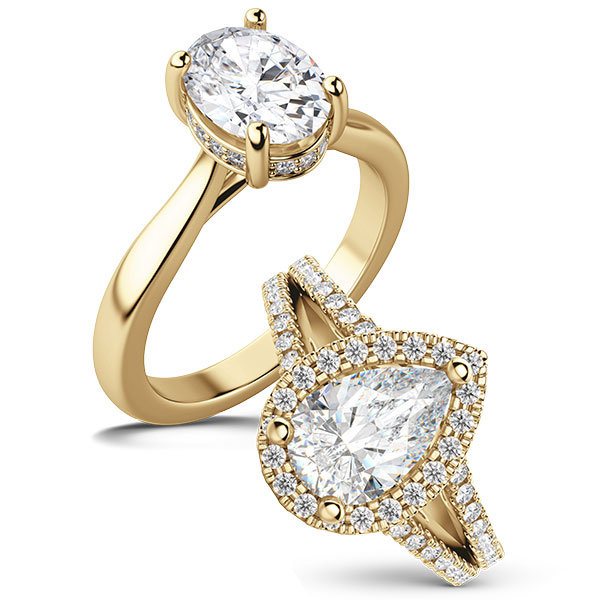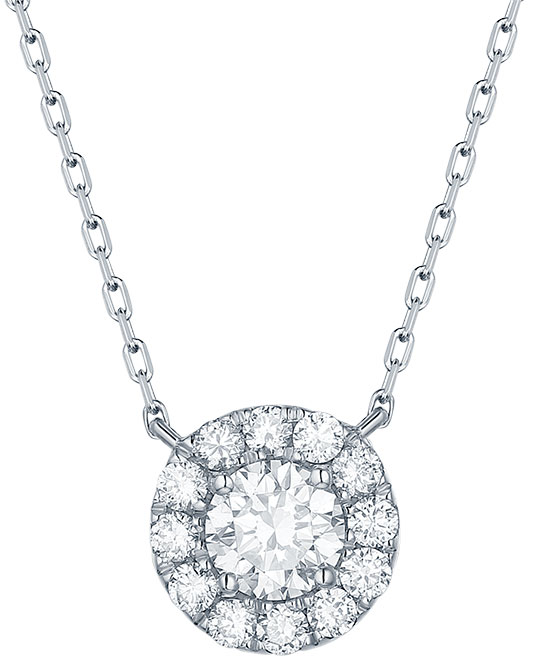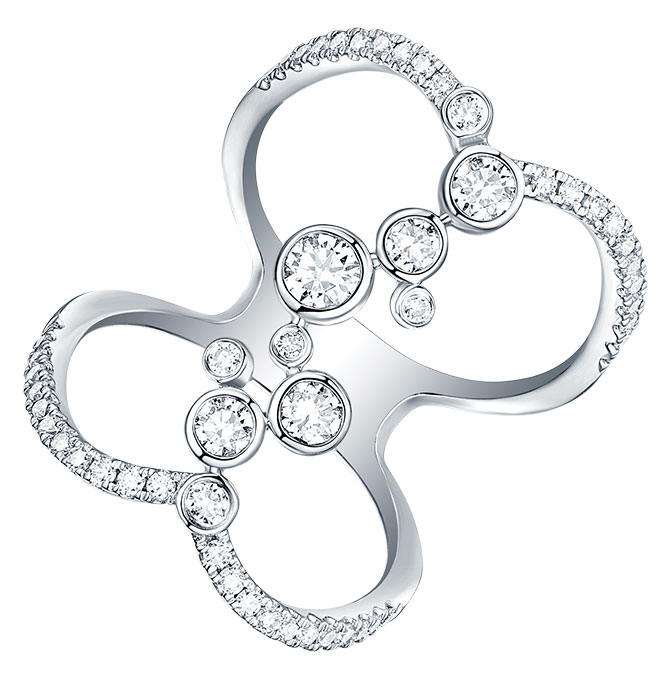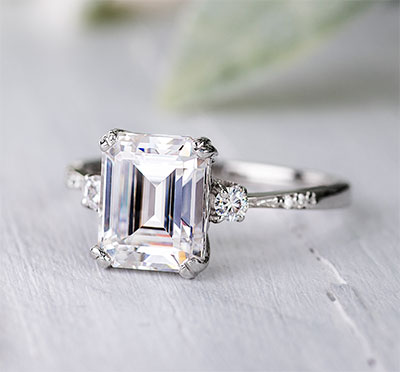
When it comes to lab-grown diamonds, you don’t want to get too creative with language. Here’s a refresher on the lingo (and legalities).
In 2018, the Federal Trade Commission (FTC) concluded a major overhaul of its Jewelry Guides, including its recommendations on lab-grown diamonds. Many in the lab-grown community, with some validity, hailed the changes as a major victory.
And yet, in the months since, some have gotten “creative” with their interpretations of the new Guides, says Jewelers Vigilance Committee (JVC) president and CEO Tiffany Stevens. A year after the overhaul, the FTC sent eight companies that sell lab-grown diamonds and diamond simulants letters about their marketing, warning their advertisements could possibly “deceive” consumers.
Which is why it’s important to review what the FTC Guides do—and don’t—say:
Disclosure is still required.

In perhaps the most commented-upon change, the FTC removed the word natural from the definition of a diamond. “It is no longer accurate to define diamonds as ‘natural’ when it is now possible to create products that have essentially the same optical, physical, and chemical properties as mined diamonds,” the FTC wrote, explaining the change.
That has led some to insist that the FTC has declared “a diamond is a diamond.” While that’s a possible interpretation of the change, the commission never used that particular wording. Under the new FTC Guides—just like the old ones—the unadorned word diamond can still refer only to a natural, mined gem. That means disclosure remains a requirement for non-natural diamonds.
“Marketers still need to make those disclosures [if they are not selling] a mined diamond,” says Reenah L. Kim, staff attorney for the FTC’s enforcement division, who worked on the revamp. Furthermore, the disclosures need to be clear and conspicuous—and the closer the disclosure comes to the claim, the better.
“Some advertisers reveal the true nature of their products behind vague hyperlinks, in an FAQ section, or on an ‘education’ page,” wrote the FTC in a June blog post. “That won’t do. Consumers could easily overlook the information because it’s not close to the product description.”
Marketers even have to be careful on social media. If the only descriptor comes in a hashtag (#labgrown), that could be misleading, the FTC says.
The FTC recommends three descriptors for lab-grown diamonds.

So how should companies describe lab-grown diamonds? The FTC recommends the terms laboratory-grown, laboratory-created, and [manufacturer name]-created. It has okayed use of the word cultured, but manufacturers need to use other descriptive or qualifying language.
The term synthetic was once on that list of recommendations, but it was removed with this revision. However, contrary to some assertions, synthetic hasn’t been prohibited; some lab-grown companies currently use it in their marketing.
The new guides do give marketers leeway to use other descriptors “if they clearly and conspicuously convey that the product is not a mined stone.” But that doesn’t mean marketers can call their diamonds whatever they want. For instance, in the warning letters it sent out in June, the FTC cautioned against using the descriptors aboveground and real diamonds created in America, which it felt “[do] not clearly and conspicuously disclose that the diamonds are laboratory-created.”
“As a federal agency, [the FTC is] always balancing consumer protection against free speech,” Stevens said on “The Jewelry District,” JCK’s podcast. “They wanted to give a little more of that free speech breathing room. Their line of thinking is, ‘Let’s open this up. And if anyone steps over the line, we’ll slap them down.’ Which they did.”
Stevens thinks the safest bet is that companies stick to the three recommended descriptors. “That fourth category is a little unknown,” she says.
Simulants are different from lab-grown diamonds.

The FTC—as well as the world of gemology—has always been clear that a simulant, or simulated diamond, may look like a real gemstone but has a different chemical composition. Moissanite, cubic zirconia, and YAG are examples of simulants. Partial-diamond hybrids are also considered simulants.
A lab-grown diamond is chemically the same as a natural diamond, but it’s grown by a machine rather than beneath the surface of the earth.
In its warning letters, the FTC charged that some marketers were deliberately fudging the difference between the two. It warned companies to “avoid describing [simulants] in a way that may falsely imply that they have the same optical, physical, and chemical properties of mined diamonds.”
Among the descriptors the FTC singled out in its warning letters: lab-created DiamondAura and contemporary Nexus diamond. It has said that the terms lab-created and lab-grown should be used only for products that have “essentially the same optical, physical, and chemical properties as the stone named.” For simulants, it recommends the terms imitation or simulated.
You can still call natural diamonds natural diamonds.
Another common misconception is that the FTC is not allowing mined diamonds to be called natural or real. Those terms are still allowed, but only for diamonds that come from the earth.
The FTC did, however, warn that those terms can’t be used in a misleading context. “It would be deceptive to use the terms real, genuine, natural, or synthetic to imply that a lab-grown diamond (i.e., a product with essentially the same optical, physical, and chemical properties as a mined diamond) is not, in fact, an actual diamond,” it wrote.
Don’t say lab-grown diamonds are eco-friendly.
The FTC’s Green Guides have long warned against what it calls “general environmental benefit” claims, like eco-friendly and sustainable.
“The concern about general environmental benefit claims is that they are susceptible to all sorts of interpretations,” says FTC attorney Robert M. Frisby. “It is rare that a product can have an environmental benefit in all the ways that consumers might take away from a general claim.”
The FTC says that marketers must have a “reasonable basis” for any eco-claim they make. If a retailer talks about a diamond’s eco footprint, and it lacks data on that footprint—and the fact is, many retailers don’t even know where their stones are produced—that may be considered a misleading claim.
Top: Hero oval-cut ring with 0.07 ct. t.w. round brilliant lab-grown diamonds, $785, Vara pear-cut ring with 0.48 ct. t.w. round brilliant lab-grown diamonds, $1,455, both in 18k yellow gold, without center stones; 1215 Diamonds; 800-604-1215; 1215diamonds.com